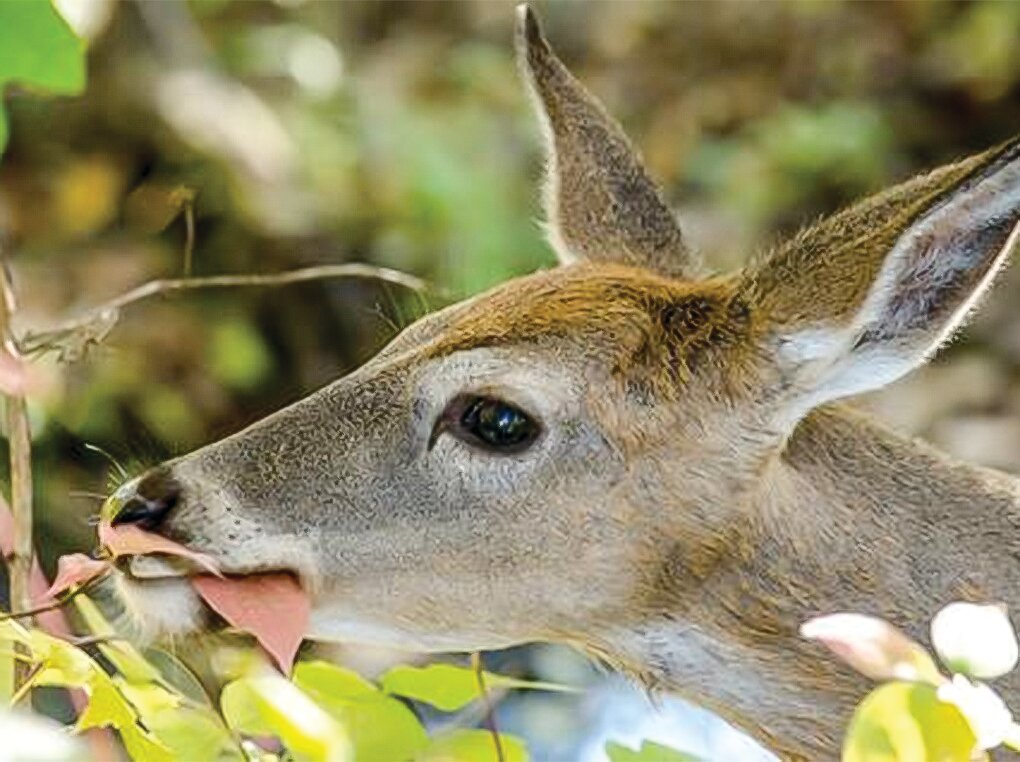Support the Timberjay by making a donation.
Keeping deer from wreaking havoc in the garden
Ely plant enthusiast has tips for protecting your flowers and more
REGIONAL— It’s that quintessential sign of spring, after a long winter. Those tulips that you carefully planted and fertilized last fall are finally up and ready to open in their pink, …
This item is available in full to subscribers.
Attention subscribers
To continue reading, you will need to either log in to your subscriber account, or purchase a new subscription.
If you are a current print subscriber, you can set up a free website account and connect your subscription to it by clicking here.
If you are a digital subscriber with an active, online-only subscription then you already have an account here. Just reset your password if you've not yet logged in to your account on this new site.
Otherwise, click here to view your options for subscribing.
Please log in to continue |
Keeping deer from wreaking havoc in the garden
Ely plant enthusiast has tips for protecting your flowers and more
REGIONAL— It’s that quintessential sign of spring, after a long winter. Those tulips that you carefully planted and fertilized last fall are finally up and ready to open in their pink, red, or purple splendor. By tomorrow it will be a much-earned blaze of color.
And then, a thief in the dark of night comes through and chews them up right down to the ground. It’s those #@$%^% deer again!
They’re the bane of many a gardener here in the North Country, routinely demolishing their most prized accomplishments, from that spectacular tea rose in the backyard to those crisp heads of buttercrunch lettuce in the raised beds just days away from filling a salad bowl.
Fortunately, there are solutions to this perennial problem, according to Kathy Cyriack, who operates Gracie’s Plant Works in Ely.
Cyriack was in Soudan last week to offer her experience and advice to members of the Tower-Soudan Civic Club, about how to discourage deer from frustrating our gardening plans. It turns out, there are many strategies— it’s more a question of what approach best suits your needs.
Cyriack had one rule, however, that every gardener should follow: don’t feed the deer during the winter. Deer are creatures of habit, who establish regular routes and trails through the woods and backyards, and even main streets, of our small towns. If you get them coming to your house in the winter, they’ll keep coming once the snow melts. Only it won’t be corn they’ll be looking for.
Keeping deer out
One sure-fire way to keep deer away from your favorite plants is with physical barriers. “Deer won’t jump into a small, fenced area,” said Cyriack. An effective fence must be at least six feet tall, however, which can be expensive and time-consuming to erect. An electric fence is easier and can be very effective with deer, notes Cyriack, but it’s not always a good choice if you have pets, children, or especially regular visitors with children. No one likes to get zapped, and it can be especially traumatic for kids.
Cyriack said you can also spread chicken wire or other metal fencing on the ground around plants you want to protect, since deer doing like walking on it (they can get their hooves tangled). But that can be labor intensive and less than desirable aesthetically.
Cyriack said smart plant selection can also be very effective. Deer love certain plants, like hostas, arbor vitae, tulips, and roses, but other plants will keep them away. “Deer will avoid plants with a strong scent,” said Cyriack, because that scent will rub off on them and make them easier for predators to stalk them in the woods. Plants of the mint family are good examples of strong-smelling plants that deer will avoid, so you can take advantage of that by interplanting mints with one of your favored plants. Cyriack said you can plant mint along your garden paths so the scent is regularly released as you walk on them. Many mints are quite tough and can spread quickly, so don’t worry about walking on them. It might actually help keep them from spreading too rapidly.
In general, deer like plants with broad, smooth leaves. They’ll gobble up impatiens, cabbage, lettuce, dahlias and pansies. Yet, they’ll typically avoid plants with fuzzy or bristly leaves, strong scents, or milky sap, which generally tastes bitter. “They hate peonies, daffodils, lily of the valley, zinnias, sweet alyssum, asters, and bleeding hearts,” said Cyriack. Most native plants are fine as well. Wild ginger, which makes a nice ground cover, is too bristly for deer. “They don’t care for lilacs, either, because of the strong scent.”
For your patio pots, geraniums, which have fuzzy leaves, are generally left alone by deer, as are most ferns. By contrast, a pot full of impatiens is like putting out candy and they’ll often nibble your begonias as well.
Some deer repellent sprays are available, and they can be effective, but Cyriack said they typically have to be reapplied each time it rains. Some home remedies, like spreading rotten eggs might also be effective, but who really wants to have to deal with rotten eggs?
While smart planting can make a major difference with deer, Cyriack said she’s found another deterrant that has proven to be remarkably effective— motion-detecting sprinklers. Deer are highly attuned to motion and sudden surprises, so having a sprinkler come on with noise and sprays of water, will usually send them packing.






